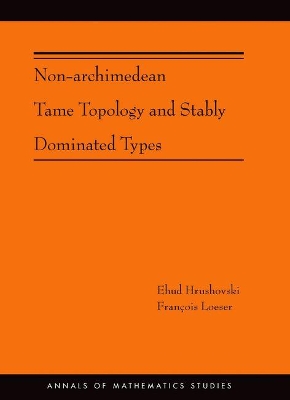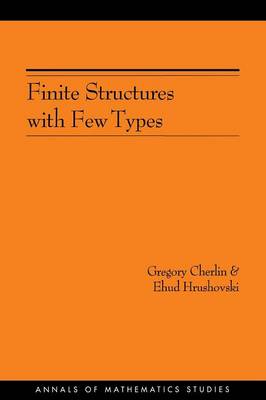Annals of Mathematics Studies
1 primary work • 2 total works
Book 192
Non-Archimedean Tame Topology and Stably Dominated Types (AM-192)
by Ehud Hrushovski and Francois Loeser
Published 9 February 2016
Over the field of real numbers, analytic geometry has long been in deep interaction with algebraic geometry, bringing the latter subject many of its topological insights. In recent decades, model theory has joined this work through the theory of o-minimality, providing finiteness and uniformity statements and new structural tools. For non-archimedean fields, such as the p-adics, the Berkovich analytification provides a connected topology with many thoroughgoing analogies to the real topology on the set of complex points, and it has become an important tool in algebraic dynamics and many other areas of geometry. This book lays down model-theoretic foundations for non-archimedean geometry. The methods combine o-minimality and stability theory. Definable types play a central role, serving first to define the notion of a point and then properties such as definable compactness. Beyond the foundations, the main theorem constructs a deformation retraction from the full non-archimedean space of an algebraic variety to a rational polytope. This generalizes previous results of V. Berkovich, who used resolution of singularities methods.
No previous knowledge of non-archimedean geometry is assumed. Model-theoretic prerequisites are reviewed in the first sections.
No previous knowledge of non-archimedean geometry is assumed. Model-theoretic prerequisites are reviewed in the first sections.
Finite Structures with Few Types. (AM-152), Volume 152
by Gregory Cherlin and Ehud Hrushovski
Published 12 January 2003
This book applies model theoretic methods to the study of certain finite permutation groups, the automorphism groups of structures for a fixed finite language with a bounded number of orbits on 4-tuples. Primitive permutation groups of this type have been classified by Kantor, Liebeck, and Macpherson, using the classification of the finite simple groups. Building on this work, Gregory Cherlin and Ehud Hrushovski here treat the general case by developing analogs of the model theoretic methods of geometric stability theory. The work lies at the juncture of permutation group theory, model theory, classical geometries, and combinatorics. The principal results are finite theorems, an associated analysis of computational issues, and an "intrinsic" characterization of the permutation groups (or finite structures) under consideration. The main finiteness theorem shows that the structures under consideration fall naturally into finitely many families, with each family parametrized by finitely many numerical invariants (dimensions of associated coordinating geometries).
The authors provide a case study in the extension of methods of stable model theory to a nonstable context, related to work on Shelah's "simple theories." They also generalize Lachlan's results on stable homogeneous structures for finite relational languages, solving problems of effectivity left open by that case. Their methods involve the analysis of groups interpretable in these structures, an analog of Zilber's envelopes, and the combinatorics of the underlying geometries. Taking geometric stability theory into new territory, this book is for mathematicians interested in model theory and group theory.
The authors provide a case study in the extension of methods of stable model theory to a nonstable context, related to work on Shelah's "simple theories." They also generalize Lachlan's results on stable homogeneous structures for finite relational languages, solving problems of effectivity left open by that case. Their methods involve the analysis of groups interpretable in these structures, an analog of Zilber's envelopes, and the combinatorics of the underlying geometries. Taking geometric stability theory into new territory, this book is for mathematicians interested in model theory and group theory.

